
It turned up to the 1980 Algarve Rally as a mere course car and finished almost 30 minutes ahead of the proper competitors.
The year after, it completely revolutionised rallying with its four-wheel drive system making its rivals look slow and antiquated. That’s the accolade we bestow on the Audi Quattro.

It’s a big one; no other car has changed a form of motorsport in the way rallying was remodelled by the Quattro. But in the 40 years since it was launched, there are arguably more significant milestones this boxy coupe can take credit for. Firstly, it proved how effective four-wheel drive was in a performance road car. No, it wasn’t the first fast four-wheel driver – the Jensen FF gets the credit for that – but the Quattro’s all-wheel drive system is what elevated the Audi into a different league. It wasn’t just any 200bhp coupe, it was a supercar-baiting star.

The Quattro’s notability is also the catalyst that transformed Audi from a quirky manufacturer of niche German cars into a proper rival to BMW and Mercedes-Benz. The brand now commands vast respect from its opponents and customers thanks to its association with four-wheel drive, a legacy the Quattro started and why the car is now colloquially called the Ur-Quattro. ’Ur’ is a German prefix that denotes something as the original version, and helps distinguish the Quattro from Audi’s four-wheel drive system of the same name.

At the same time, the Quattro domesticated the turbocharged engine and showed that forced induction wasn’t the wild and scary world that the BMW 2002 Turbo, Porsche 911 Turbo and even Audi’s own 200 Turbo, proclaimed that it was. The Quattro stood for stability and safety, as well as being turbocharged and fast.

With all that in mind, you’d imagine that the Audi bigwigs in Ingolstadt excitedly dropped their pretzels when they heard about the idea for the Quattro. Amazingly, that wasn’t the case. You see, in the late ’70s, before the Audi Quattro, four-wheel drive cars were big, bulky, heavy and pretty crude. All-wheel drive systems came in two options, either with a heavy transfer box and a centre diff, like those found on off-road cars and the Jensen. Or, like early on Subarus where there wasn’t a centre diff at all, and you just hoped the open front and rear differentials would sort out any transmission wind-up. Neither option suited the image that Audi was trying to cultivate, one of ultra-sophisticated high-tech engineering.

One man did see the potential in the engineers’ four-wheel drive road car proposal. A man that pops up in almost every story associated with astounding German cars, whether its a Porsche 917 or VW Phaeton, that’s Ferdinand Piëch. At the time, Piëch was Audi’s head of research and development, and, along with Walter Tresser the head of pre-development, he was determined to make the Quattro happen, despite any resistance from the money men.


To persuade the board members above him, Piëch demonstrated the Quattro’s strengths with a series of stunts. To begin with, he drove Audi’s sales director, Werner Schmidt, to the top of the formidably steep Austrian Turracher Höhe pass in the depths of winter on regular summer tyres. Then Toni Schmücker, VW’s board chairman, was invited to drive a prototype Quattro up a hillside. The specific slope was one that Piëch had instructed the local fire brigade to douse in water and turn into a mudslide.

Finally, for any of the suits still not convinced, the Quattro team set lap times at Hockenheim with their prototype and a two-wheel drive car with considerably more power. They showed that the four-wheel drive car only needed two-thirds of the power to set an identical lap time.

The stunts were only partly responsible for the Quattro being approved. The other clincher was that the engineering team had actually created a whole new type of four-wheel drive system. Audi’s manager of experimental running gear, the father of the Quattro, Jörg Bensinger, had managed to combine the refinement of a centre differential system with the compact, light packaging of the more simplistic four-wheel drive units.

The Quattro’s drivetrain took advantage of Audi’s then trademark layout: longitudinal engines ahead of a front-wheel drive transaxle. The natural place to put a centre differential was at the back of the gearbox and send power in a straight line to the rear axle. Easy. The problem was how to get power to the front differential nestled away in the bell housing, what with there being a gearbox in the way.

Bensinger’s solution was to make the output shaft of the gearbox hollow. That allowed a prop shaft to pass through the inside of the rotating gearbox shaft to the front differential. Not only was the solution symmetrical, but it was also compact and light. The only question anyone was left wondering was: were the hollow shafts strong enough? All those rally wins have determinedly answered that by now.

If you were in any doubt as to whether the Quattro has had a big enough impact on the industry, that hollow shaft technology has inspired many other innovations too. It’s used to turn transverse engined cars into four-wheel drive cars, too. Proper ones, like Integrales and Evos, not any of that on-demand Haldex business. It’s also what allows dual-clutch transmissions to split pairs of gears for each drive plate. The Quattro had an extra role in the development of the DSG/PDK transmission, too, as it was installed and tested in an S1 Quattro at the Austrian Semperit Rally in November 1985.

There was one final hurdle for Peich, Tresser and Bensinger to overcome before the Quattro was launched, and that was the car’s name. Internally the project was known as the A1 (Allrad 1), but it needed a much more evocative title to illustrate how significant the car was. The marketing department’s favourite was Carat. Tresser was not a fan and was delighted when he remembered there was a cheap perfume from a company called 4711 with the same name. Everyone agreed Audi’s new flagship car could not share its name with some affordable cologne. Out went Carat and Quattro, Italian for four but with an extra ’t’, was in.

Search for Carat perfume now and you’ll find a scent made by Cartier, a brand much more aligned with a car like the Quattro; one that 22 craftsmen slaved over, building it by hand. Although Audi’s intention was for the Quattro to go rallying, it never built it like any old homologation special. It wasn’t hastily thrown together with iffy welds and daubs of fibreglass resin just so it could make the required numbers. Oh no. The Quattro was built in a dedicated corner of the Ingolstadt factory called the ‘exclusive boutique’ and had 44 hours of skilled man-hours bestowed upon it. By the late ’80s Audi was pumping out 1,700 cars a day, yet only three of those were Quattros. At the time, Ferrari was building Testarossas faster.

The Quattro truly was Audi’s supercar of the ’80s. It didn’t matter that it was practical and capable of carrying four people along with their luggage. It was built with exemplary care and attention, it had stunning sharp looks and, just like any supercar, it was fast. Its five-cylinder turbocharged engine, initially 2,144cc but later enlarged to 2,226cc, produced 200bhp. It could accelerate from zero to 60mph in just 6.5 seconds, 0.2 seconds faster than a Ferrari 308 GTBi. And that’s in the dry; the poor old Italian wouldn’t have a clue where the Audi had gone in the wet or on snow.

In the past, I’ve been lucky to drive Quattros from both ends of its life span; an original 1980 Quattro (a Ur-Ur-Quattro, if you like) and a 20V. The early cars can no longer persuade you their supercar status from looks alone. They’re just so skinny and delicate, tiptoeing on their slender 15×7-inch wheels. The first Quattros came with four headlamps, cable operated centre- and rear-diff locks, and were left-hand drive only. Later cars do appear tougher, with wider wheels and single-piece square headlamps. Meaner looking, perhaps, but also easier to live with as the diff locks became button-operated and right-hand drive models became available.

You’re never really slumming it in a Quattro, though, even in one of the quad-lamp cars. They’re well-appointed, luxurious cars and equipped with appropriate ahead-of-their time gadgets. Because what do you really need when its blustery and icy outside and you’re securely powering across the snow in your Quattro? Heated seats, of course.

Today, a 1980 Quattro is an odd combination of feeling modern and significantly dated. It’s not just the body’s determinedly straight edges that age it; the Quattro doesn’t initially behave like a new performance car, and not like a modern fast Audi at all. It doesn’t shout about its speed and power, exhibiting a sporty attitude in the initial turn of the steering wheel or the top millimetre or two of throttle travel. No, in the Quattro there’s a delay to everything. There’s a bit of turbo lag before the engine gets into its stride, and the nose doesn’t exactly dart into corners.


But it’s far from some ancient delicate artefact either. It feels tough, durable and as solid as many modern cars. That encourages you to increase the pace and determinedly storm into each corner. Its abilities shine when you’re scurrying across back roads. With the engine singing away, turbo lag just isn’t an issue and its slightly indifferent front-end displays nothing other than grip. It might not be all immediacy and up-front energy, but what the Quattro does share with new Audis is composure. Stoic, unshakable composure.

The later 20V Quattro is where you’ll find greater interaction. Launched in 1989, the four-valve-per-cylinder model had an extra 20bhp over the earlier cars, with 220bhp. By then, the Quattro had received the superficial changes mentioned before, as well as a Torsen automatic torque-biasing centre differential. The LSD replaced the lock on the middle diff to aid traction all the time, rather than at just low speeds.

The new cylinder head combined with the diff gives the Quattro more urgency. There’s more of that five-cylinder warble that you want, too. Nothing like you’d get in a TT RS these days, but when the revs rise and the turbo is spinning it’s unmistakeably a boosted five-cylinder.

In the 20V there’s a distinct feeling that the nose is heavier, even though it isn’t at all. That does not mean it understeers more, quite the opposite, actually. The engine acts as a counterweight to the rest of the car, helping the 20V rotate around its front axle. Accentuate the nose’s heft, make it dive with a firm press of the brake pedal late into a corner and you can liberate an extra degree of agility. There’s still that trademark Quattro security; it’s hardly wild, but you spend a greater amount of time with the steering wheel pointing straight ahead, driving in the fashion you always thought a Quattro might behave.

Enough reminiscing, though, because today is a special one. It’s all about the ultimate Quattro, the Sport Quattro. The Quattro with more. More turbo, more intercooler, more arches, more vents, more power and more purpose. One thing it doesn’t have more of is wheelbase. Quite the opposite, Audi chopped 317mm from the car’s shell to create the Sport in 1983. This abbreviated Quattro, with a wheelbase more than 100mm shorter than Audi’s tiny Polo-based 50, looks adorable sat on four plump wheels. But it isn’t meant to lovable, it was designed to be intimidating. The Sport Quattro was built to rival the purpose-built space-framed Group B cars Audi was competing against on the rally stages.

The Sport Quattro wasn’t simply a cut and shut job because as well as its 2,225mm wheelbase, it was the first time we saw the 20V cylinder head. Which, combined with a bigger Kühnle, Kopp & Kausch K27 turbocharger and a massive intercooler that pushed the grille forwards, the five-cylinder produced 302bhp and 258lb-ft of torque. All with the slightly smaller capacity of 2,134cc, so that it would comply with the rally regulations.

A new roof and rear quarters were needed to suit the truncated body, so Kevlar-reinforced fibreglass ones were used instead of steel. They had the added benefit of being lighter, too, and matched the material used for the front wings, bonnet and fan shroud, which lifted a little weight from the engine-laden nose. Overall, the Sport Quattro weighs 1,273kg, 107kg lighter than a 20V.

Inside, its typical Quattro. Square leather dash, solid-feeling everything, a puller to lock the diffs and a heated seat button. The only real differences are that the c-pillar is now much closer and creates a big blind spot over your right shoulder, and the rear bench seat now looks more like temporary jump seats, as the base is only half the depth it should be.


It’s quite a bit different to drive, though. It’s explosively fast. Not fast for the ‘80s, but properly fast. Accelerate hard in a low gear and just as the revs hit 4,200rpm-or-so, you spot the needle on the boost gauge ping around in your peripheral vision. A mere moment later and the nose launches up and you’re blasting down the road like a powerboat.

It’s much more immediate than its unreduced siblings, too. The steering is initially a little vague and it’s quite slow, but wind on some lock and the Sport follows your commands. Add even more steering and it just keeps rotating around.


On glistening wet winter tarmac, the Sport Quattro is not prepared to relinquish its grip. Even with all that turbo power, you can’t break the tyres’ bond with the road with throttle alone. And it simply doesn’t want to deviate from the path you dictate either. It’s exactly what we’ve come to expect from Audis of today, and that reputation for supreme imperishable traction starts here.

And although that sounds like a compliment, it’s the stick we bash modern Audis with. Their inability to show a more relaxed side, to forgo grip for fun and greater interaction, is a frustration. It’s a legitimate gripe. In today’s world with adaptive dampers, modern tyres, electronic differentials and computer-controlled safety systems, we rightfully expect to have traction when we want it then a wild side to keep us interested the rest of the time. Audi has, occasionally, proved that much is possible. The R8 and B6 RS4 are shining examples of its expertise. But as clever as those Ingolstadt engineers are, and despite the many clever systems they have at their disposal, they can’t always achieve more than all-out restraint from their fast four-wheel drive machines.

So, for the 36-year-old Sport Quattro to reflect its modern-day counterparts so closely with just a simple set of cogs, some hollow shafts and four fat tyres, demands a huge amount of respect. The same sort of deference we have for the makers of the Quattro now. This car is the essence of Audi distilled and reduced down into a short, cute, little package.
Will Beaumont
Instagram: will_beaumont88
Photography by Jordan Butters
Instagram: jordanbutters
jordan@speedhunters.com
Additional Photography by Audi

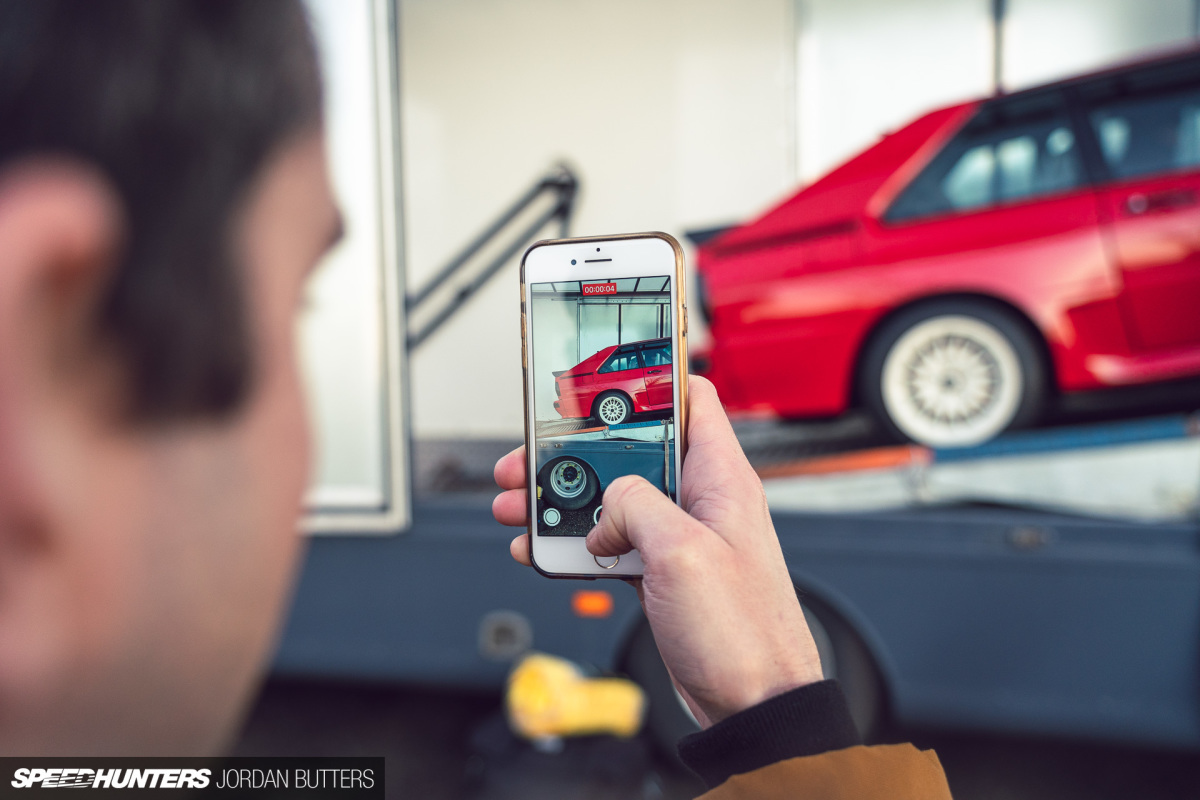
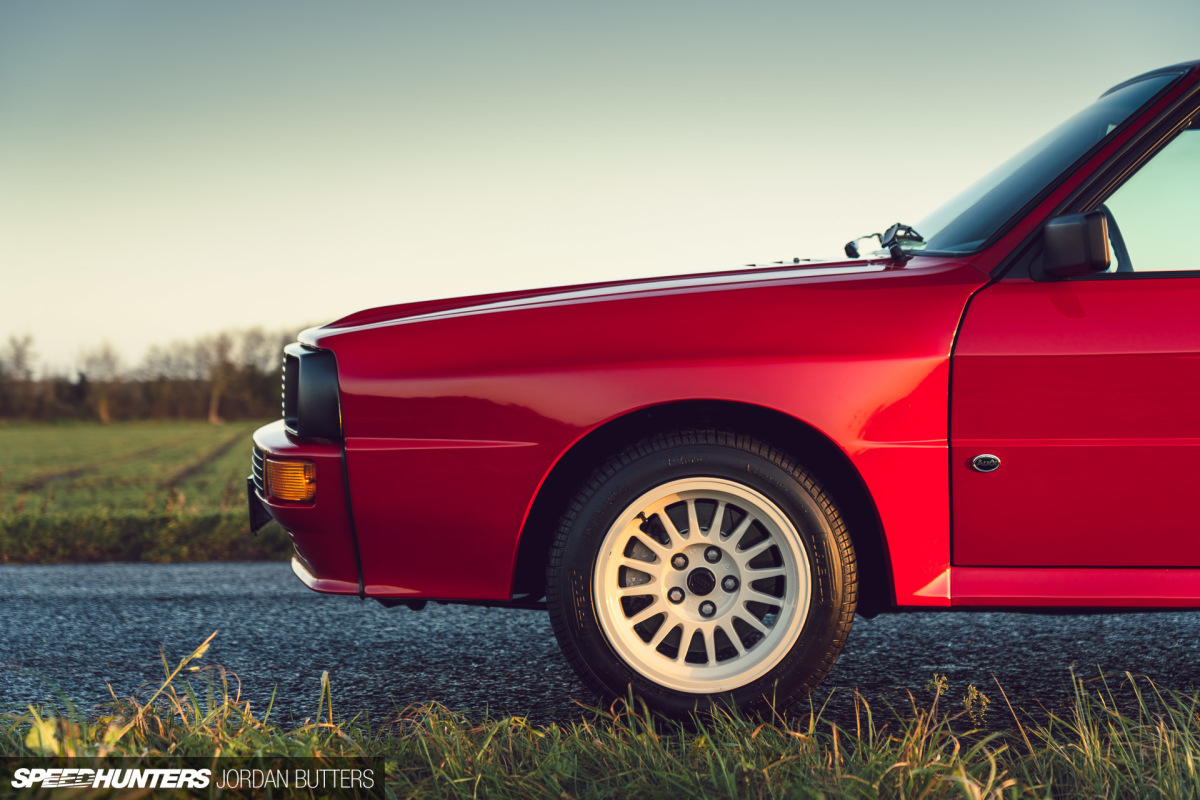
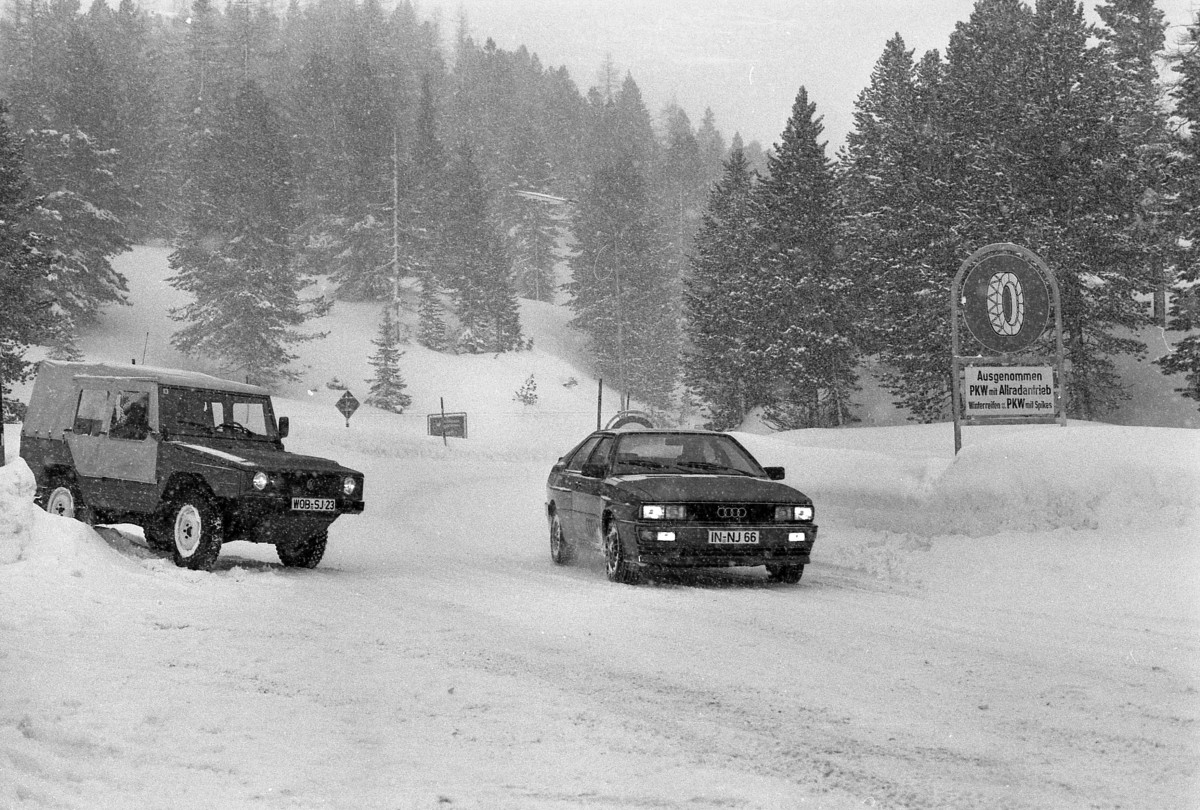

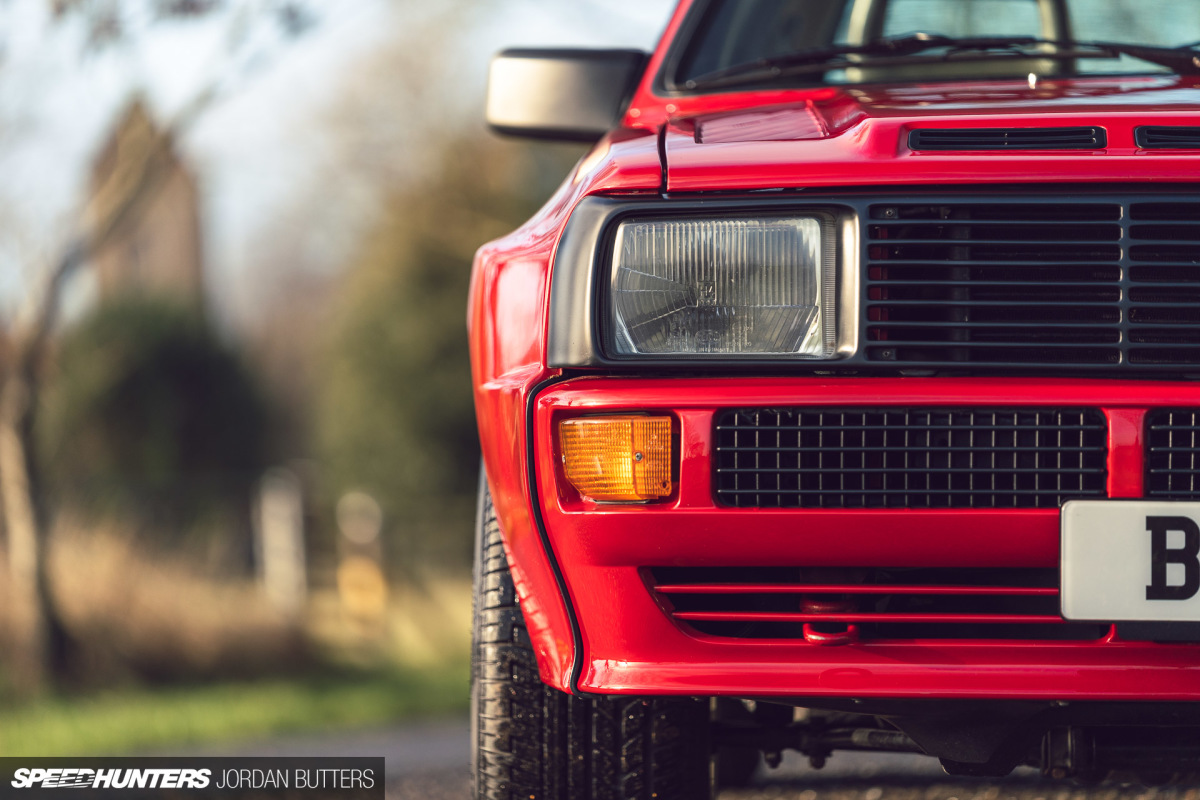
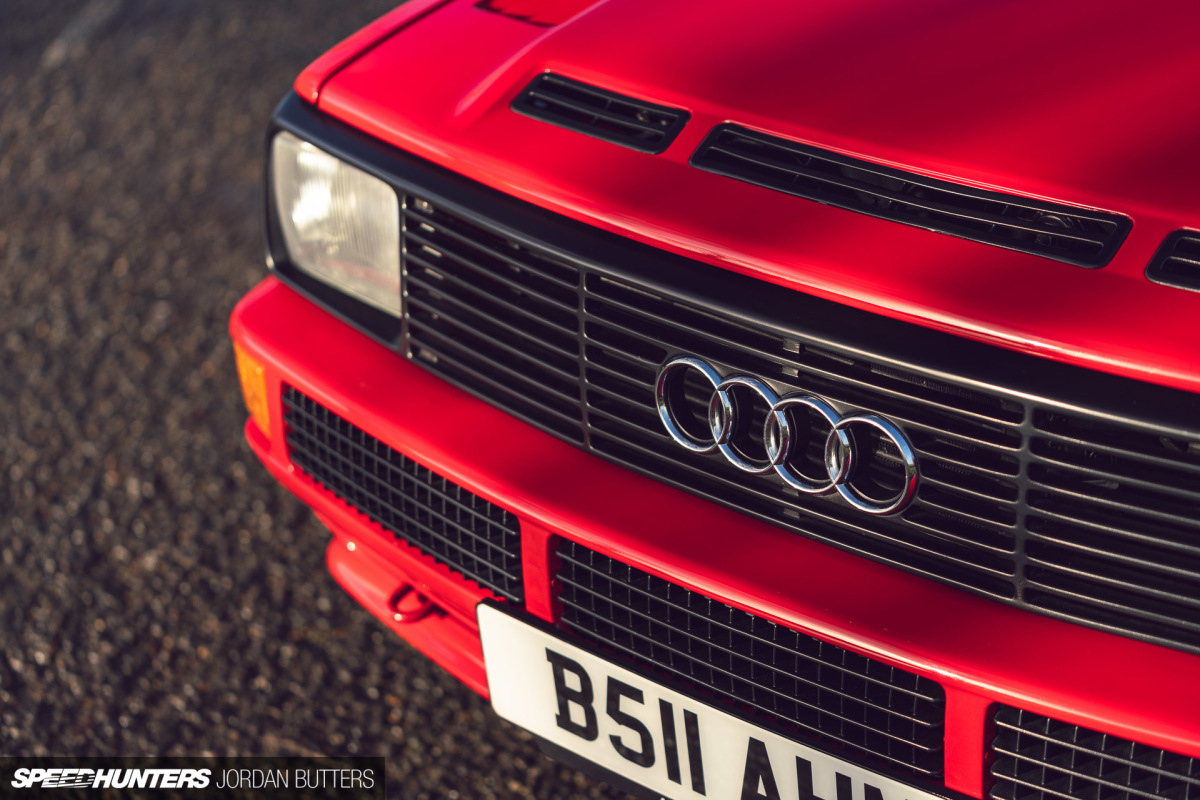
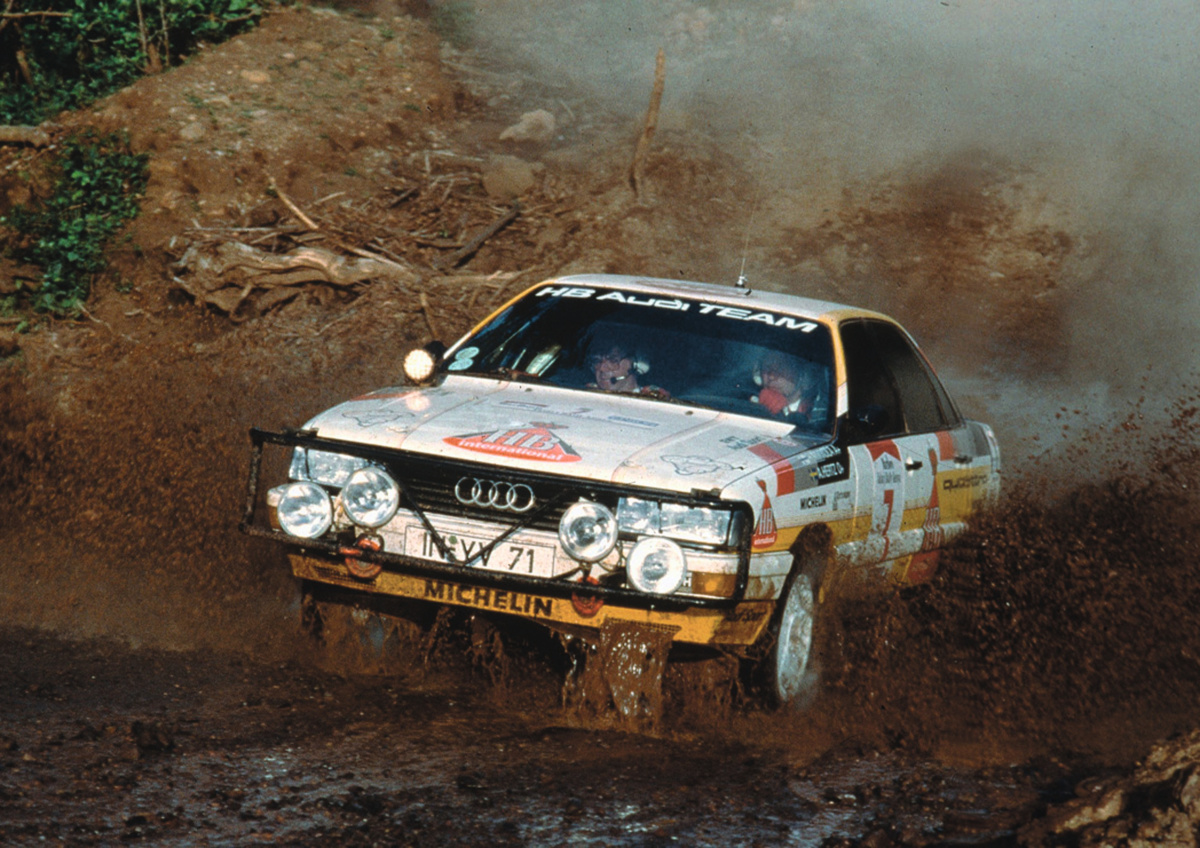
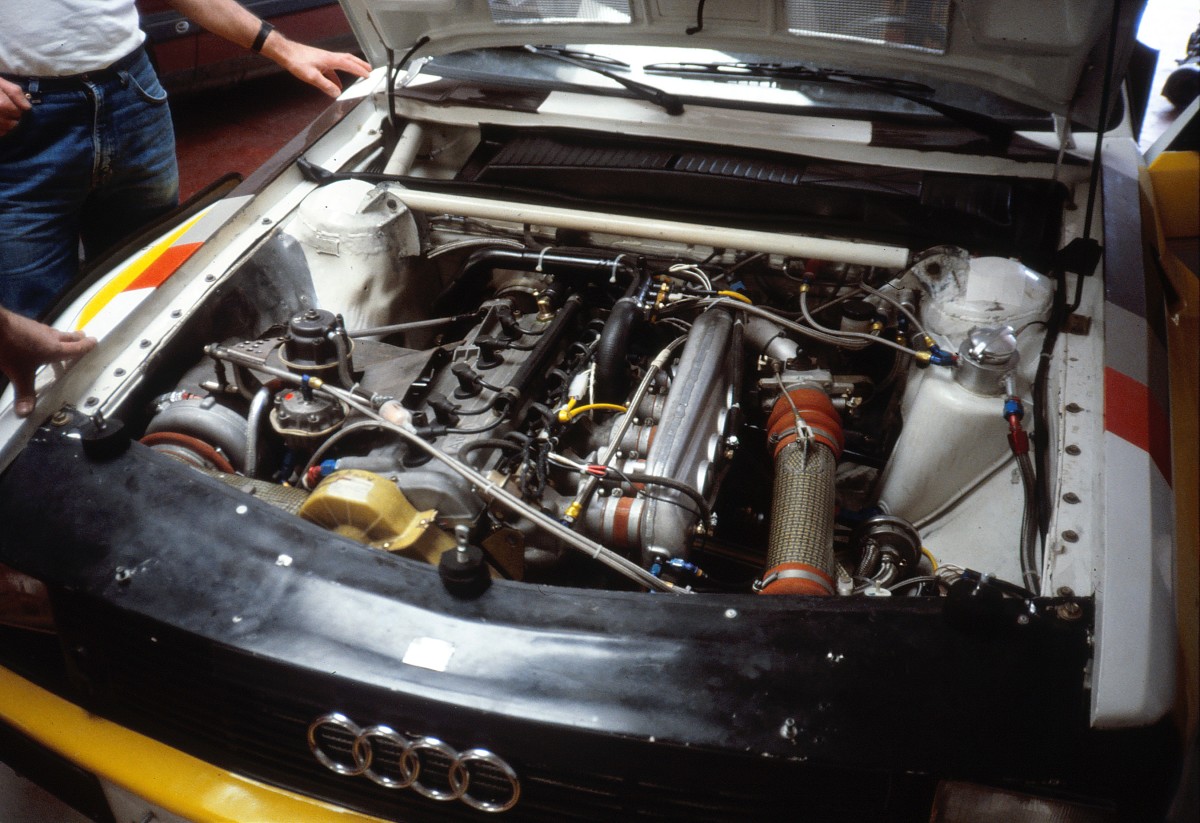
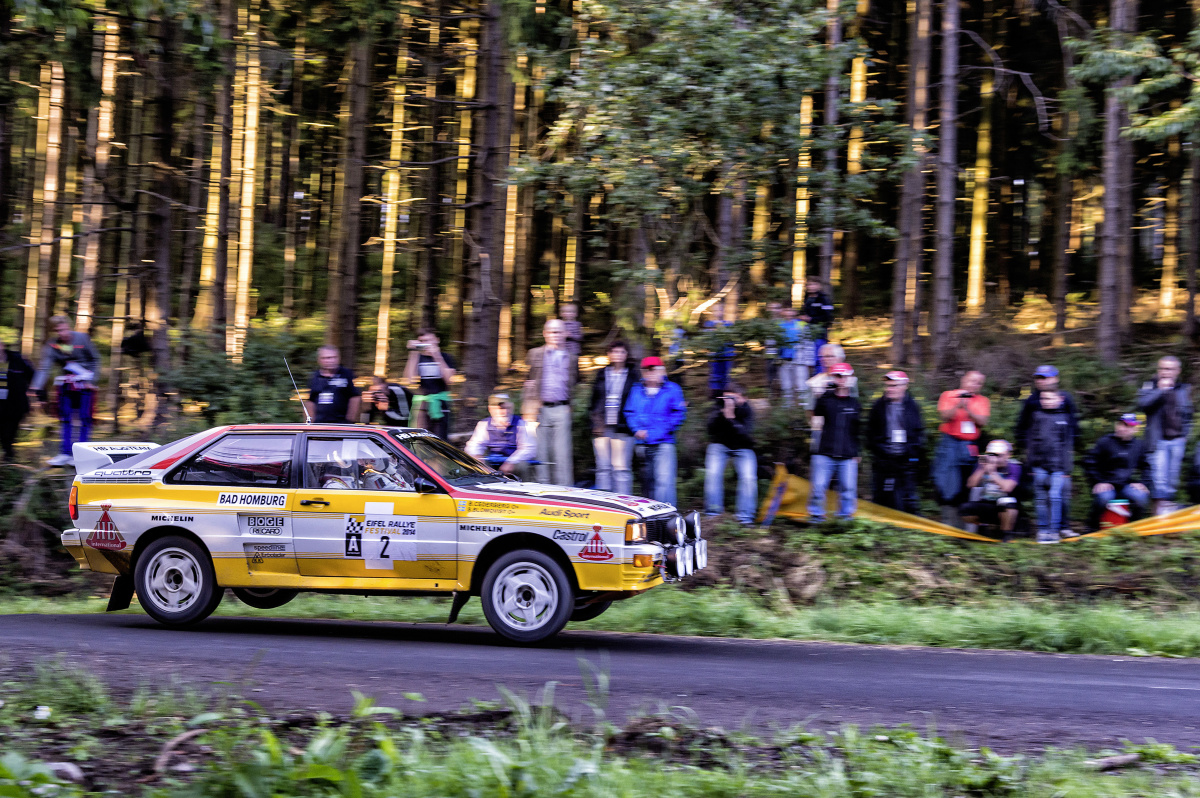

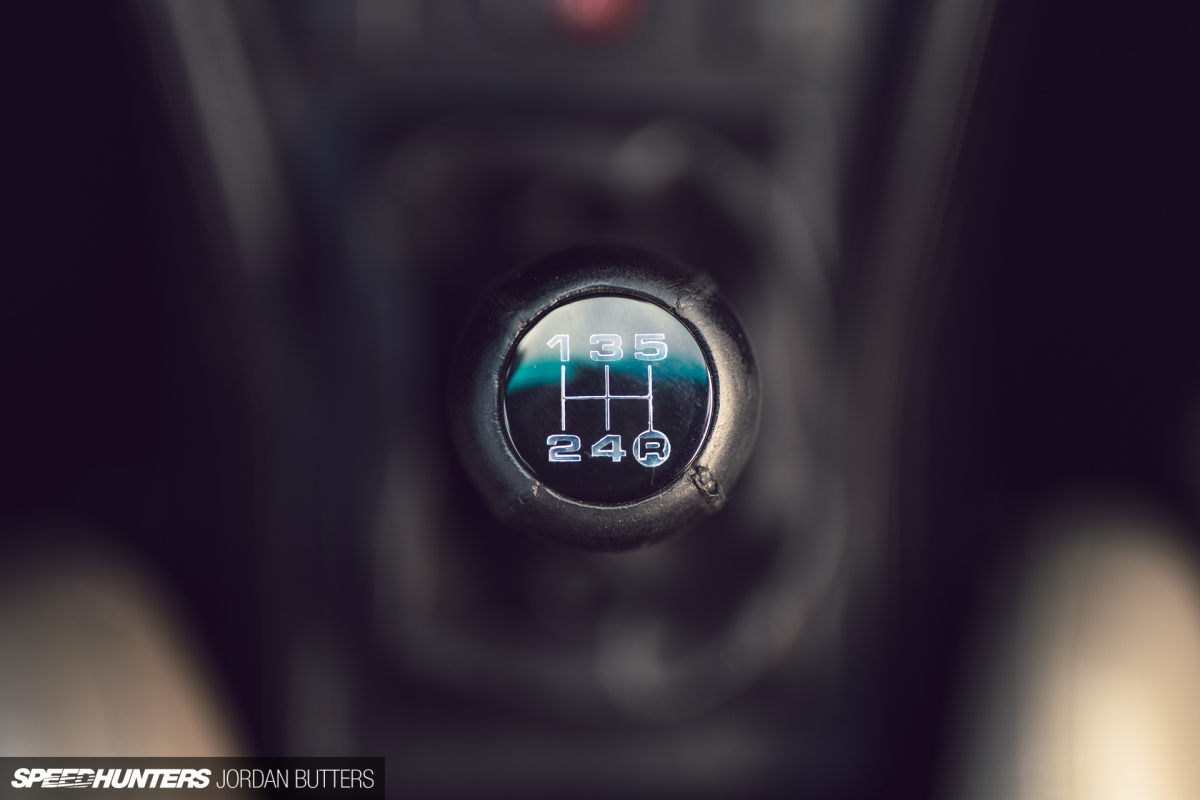
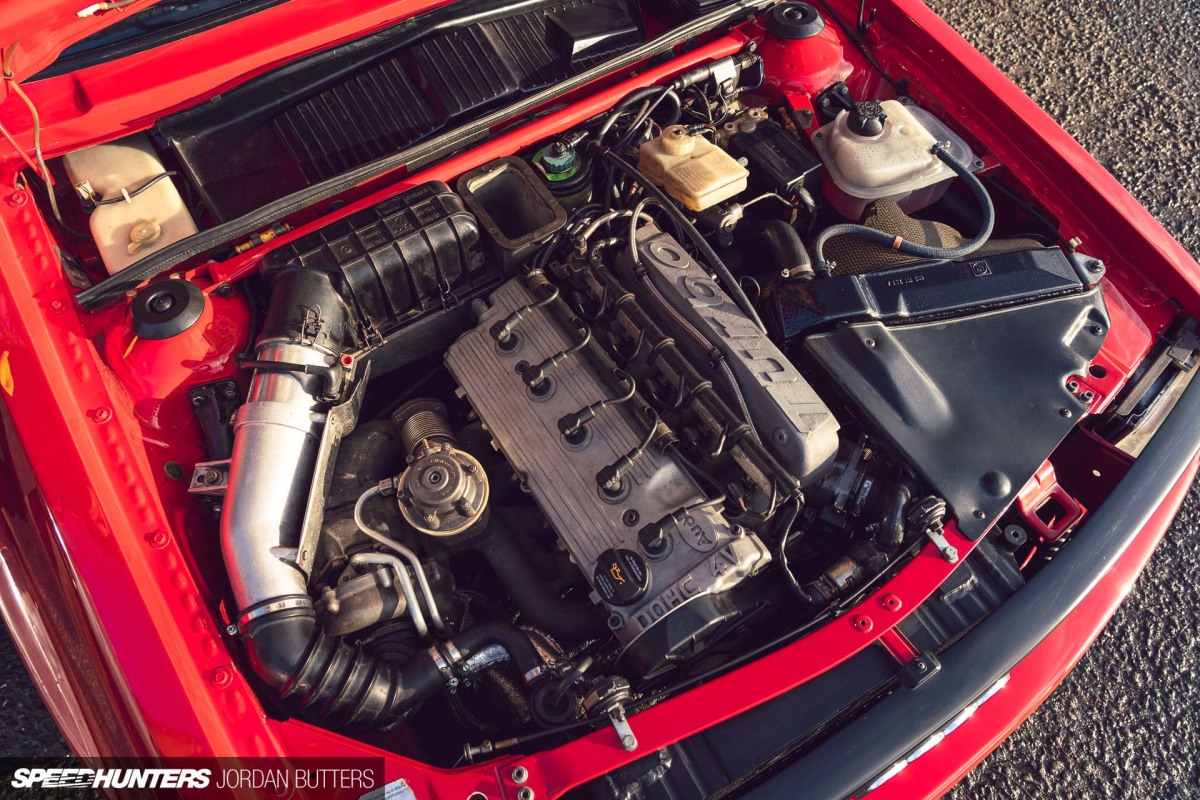
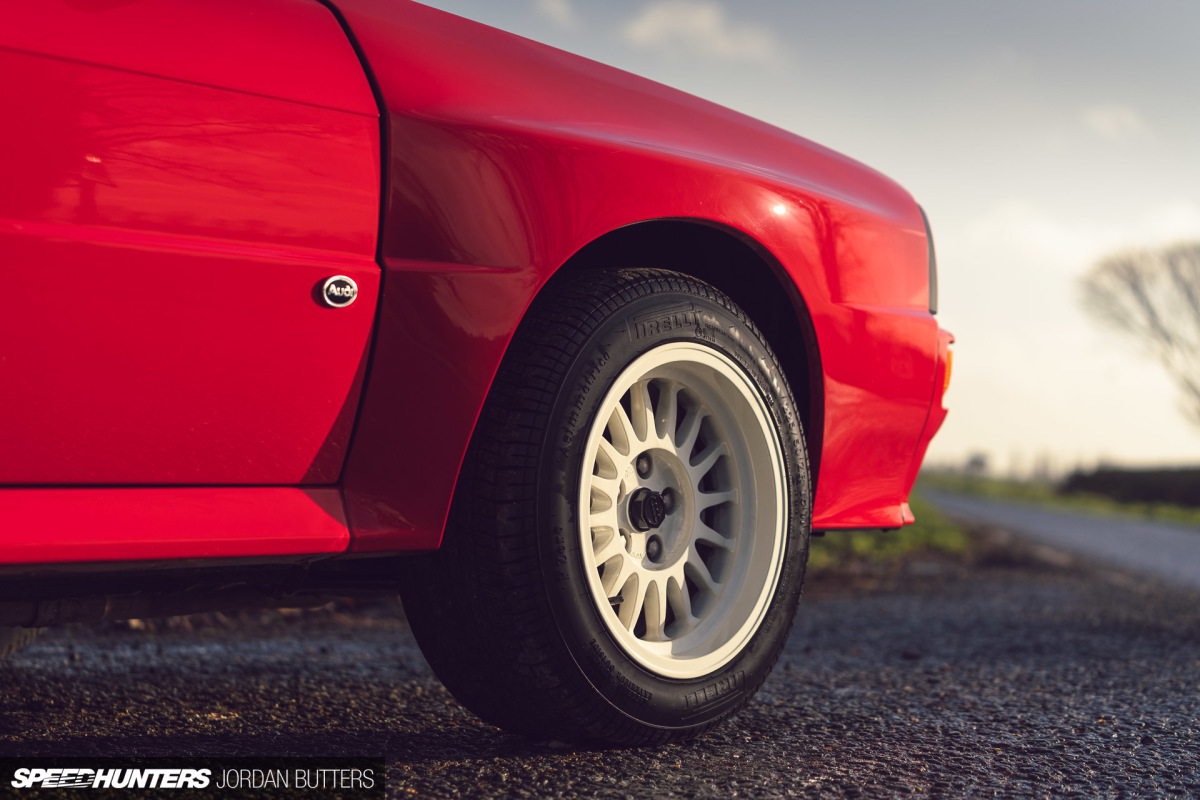
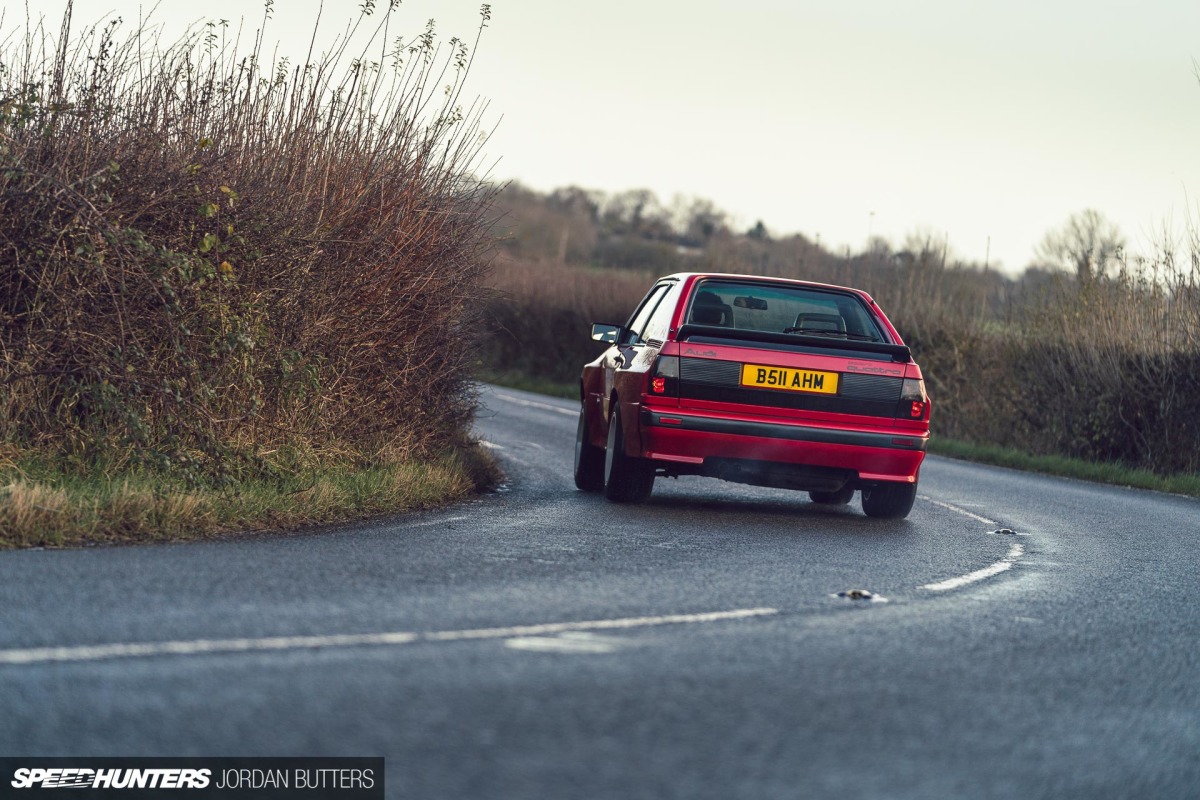
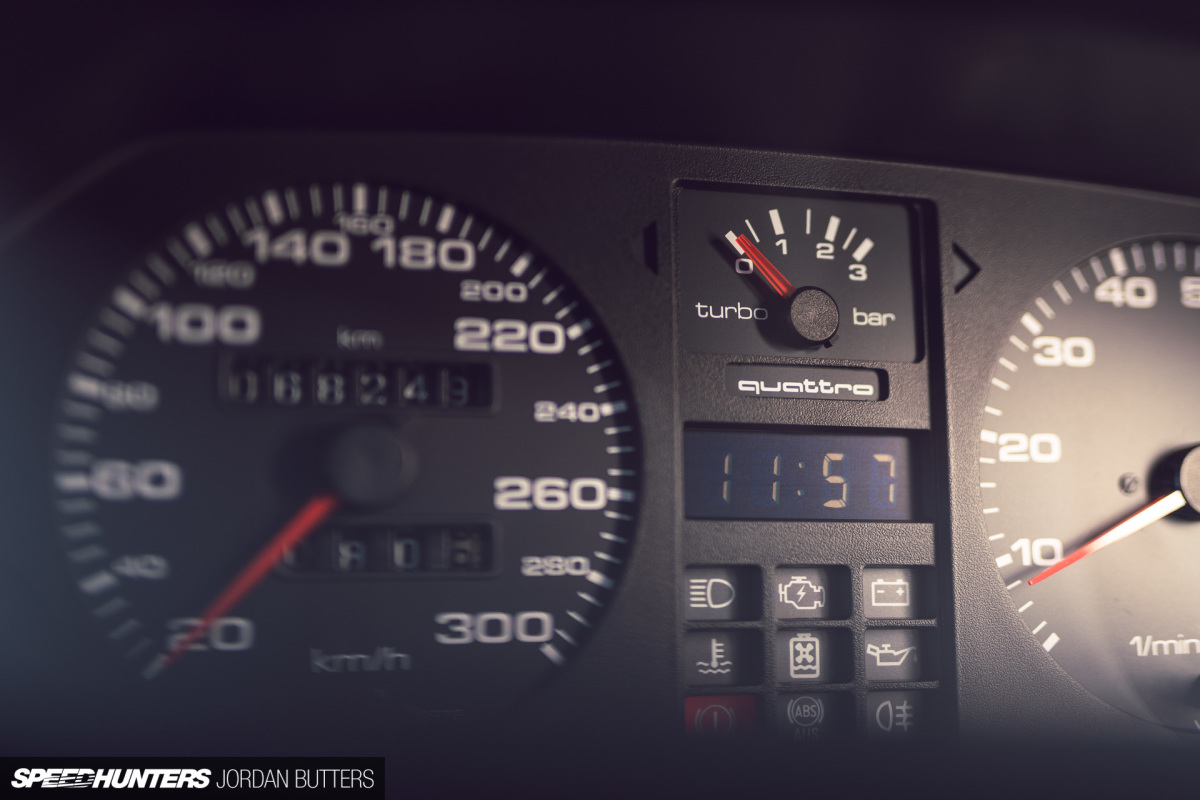
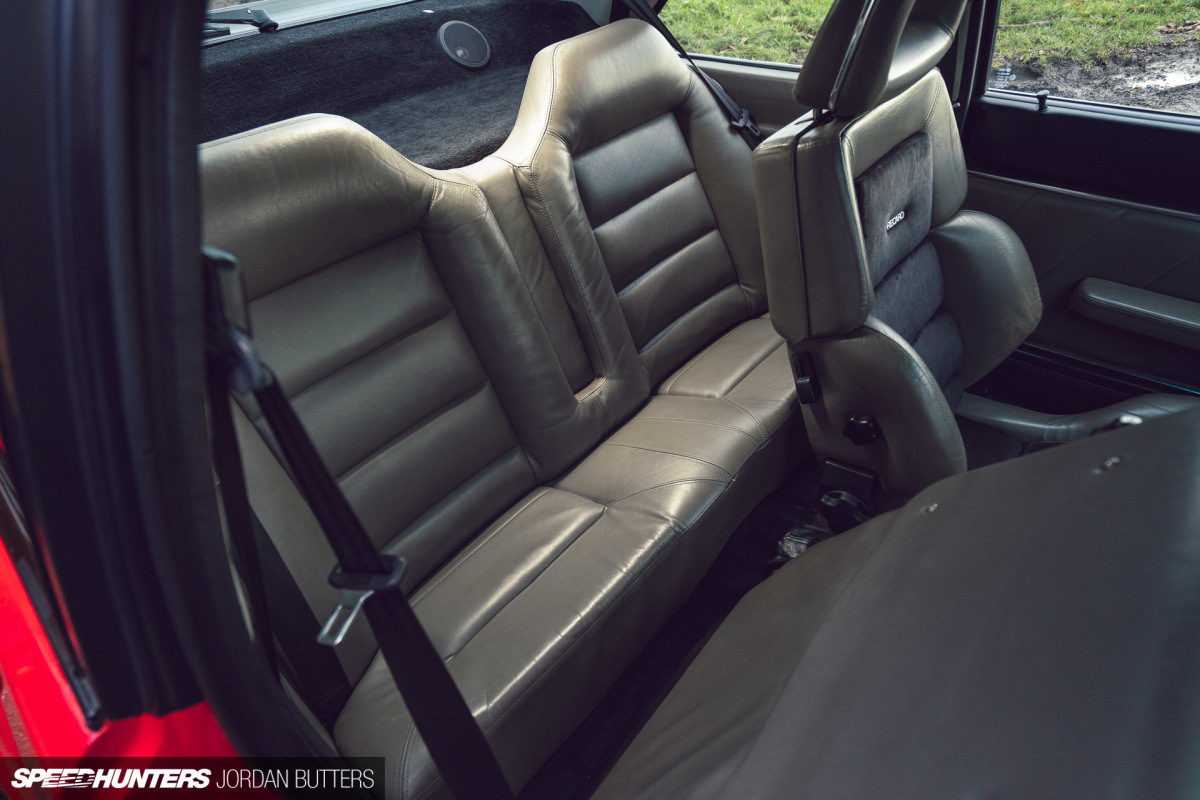
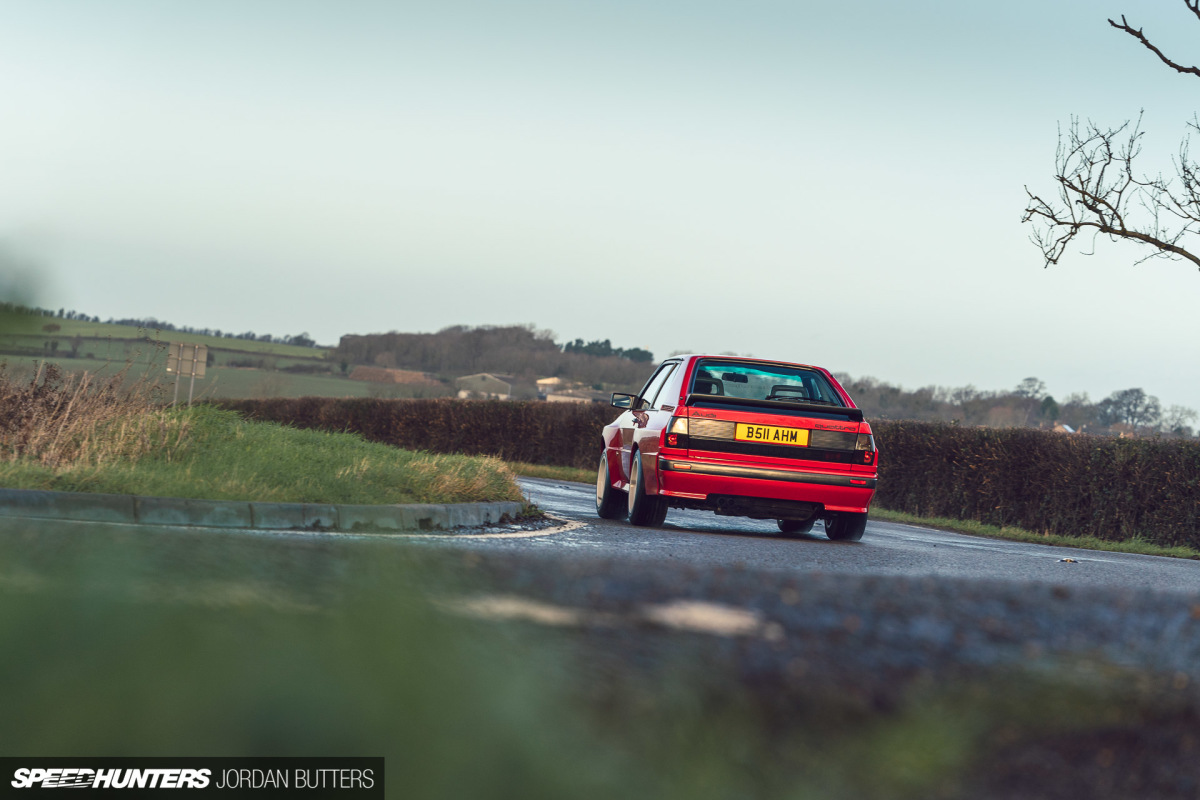
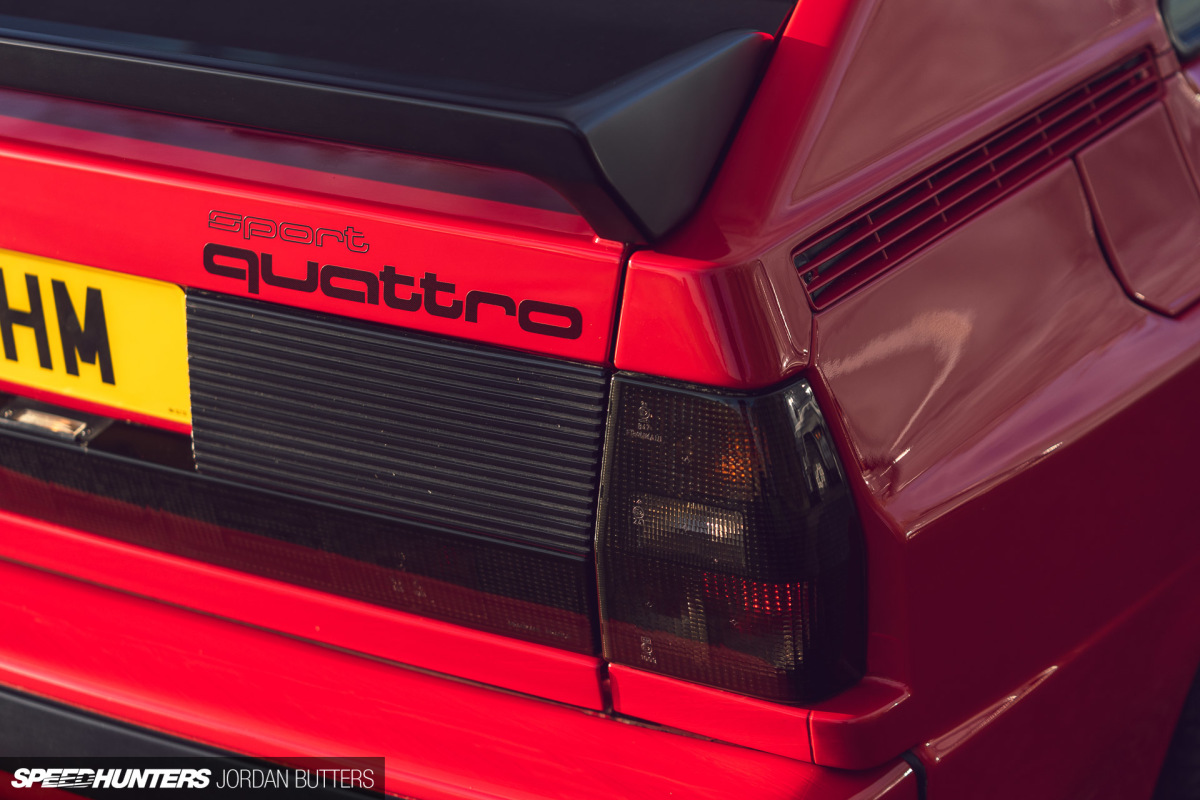
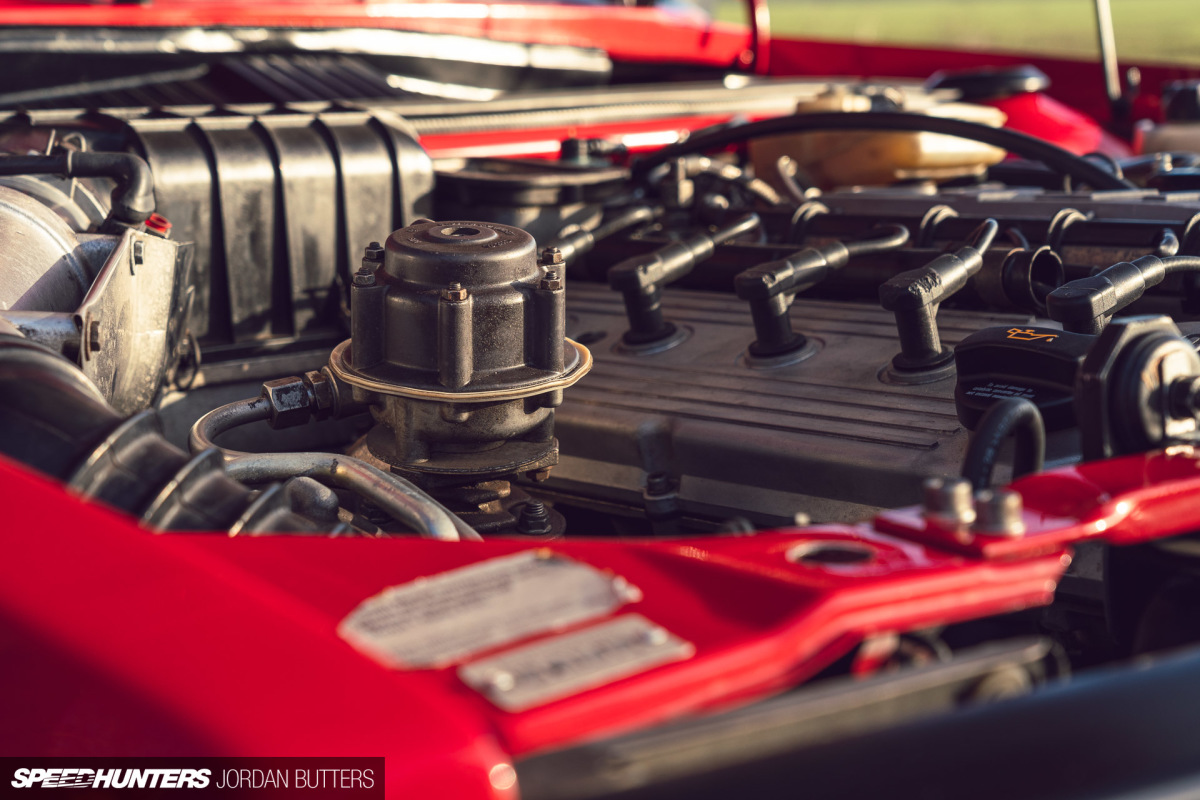
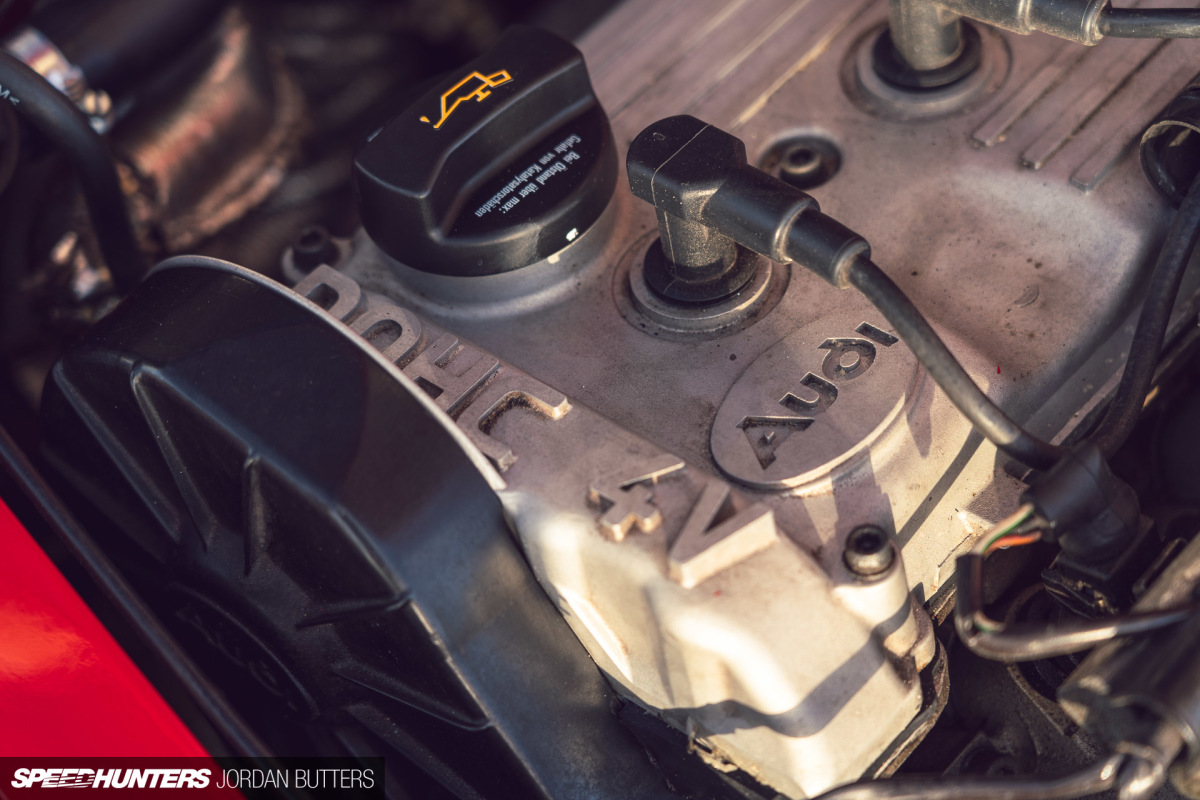
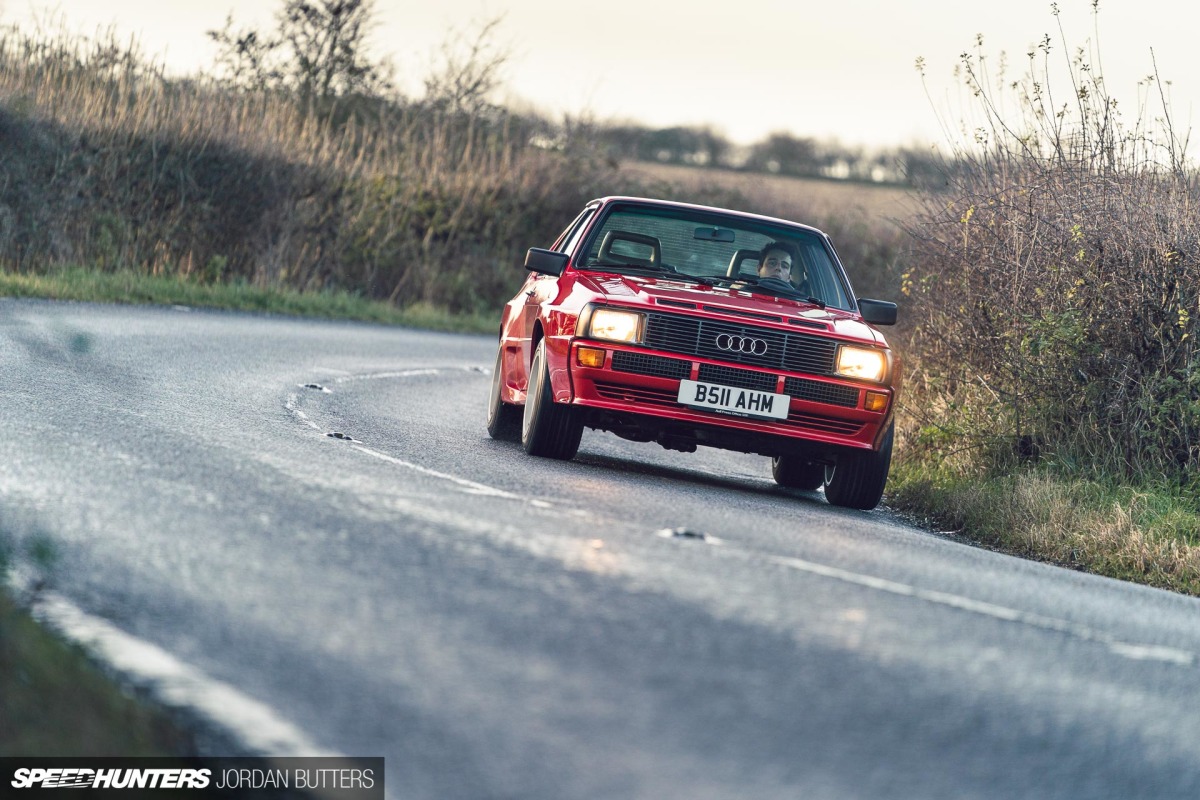
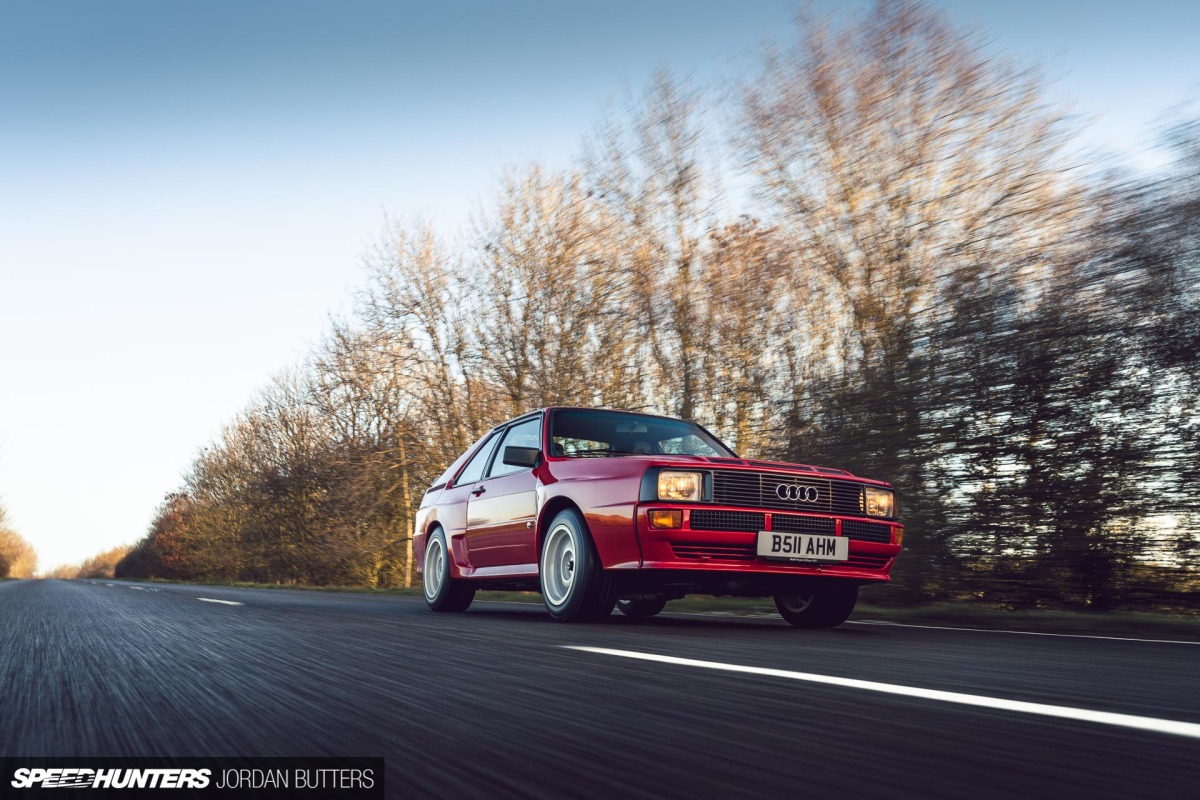
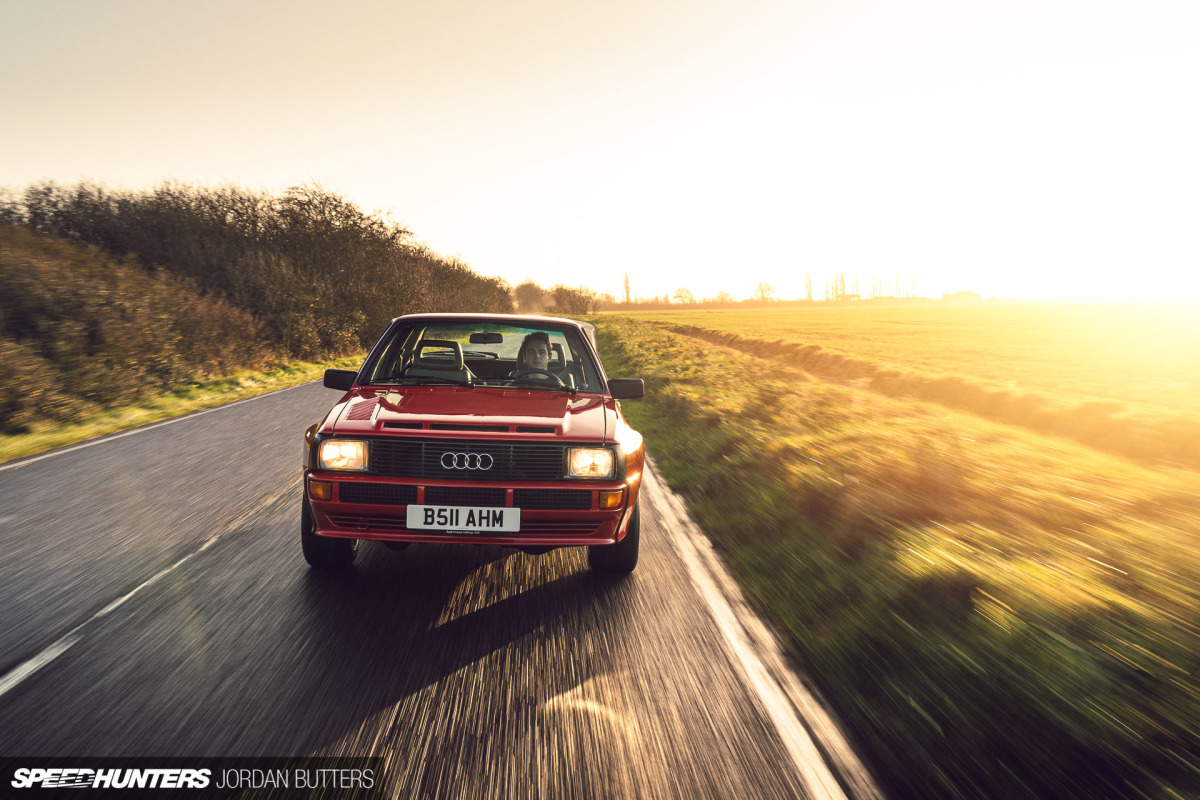
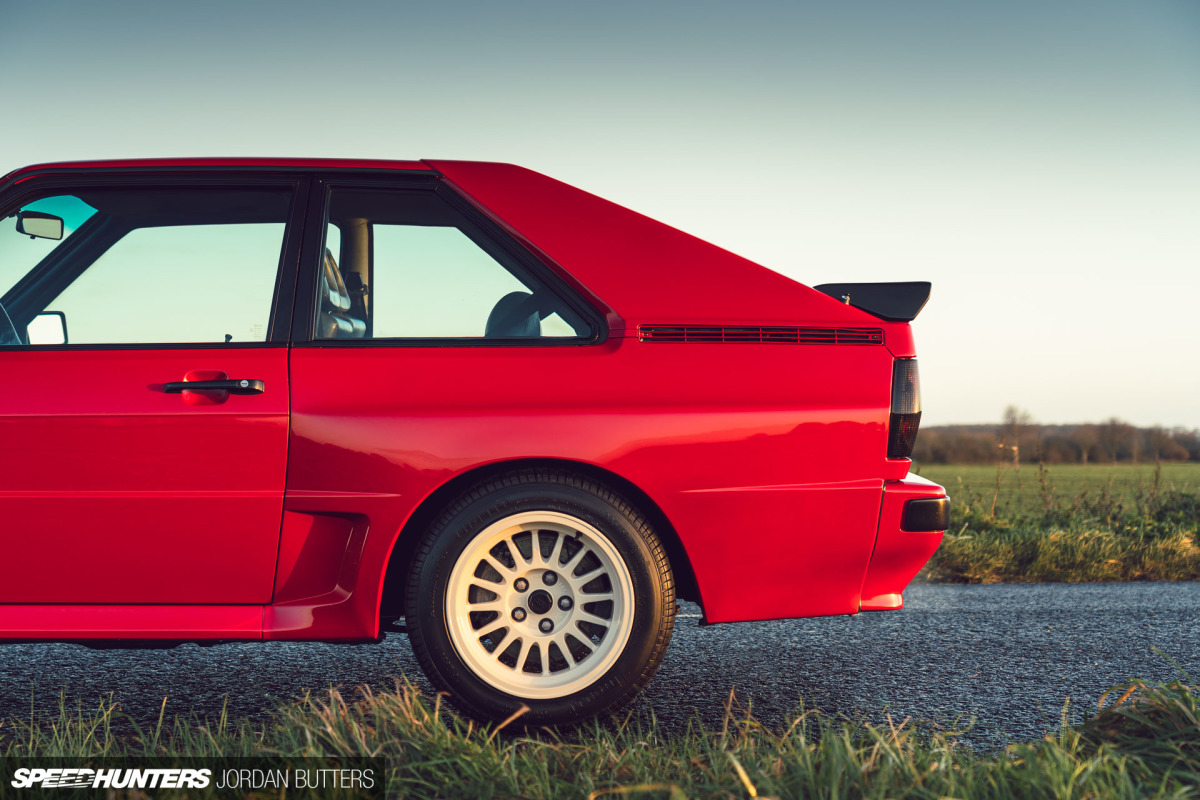
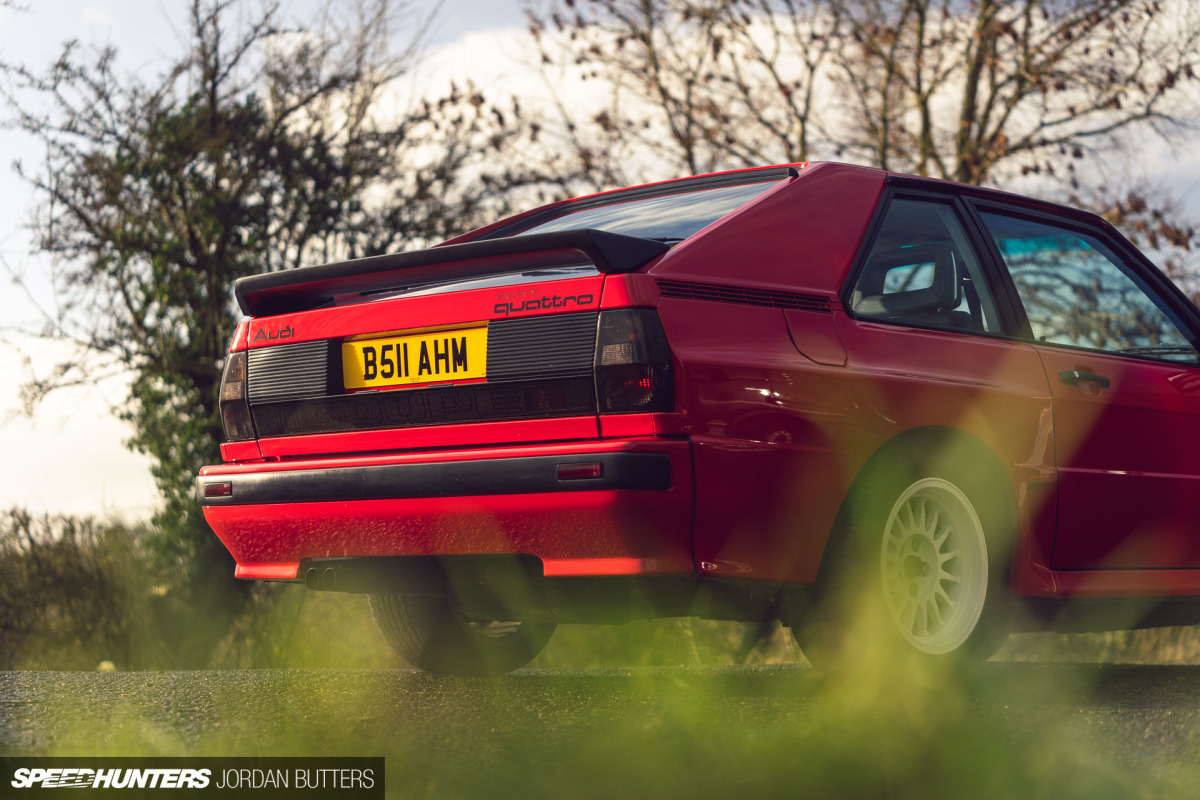
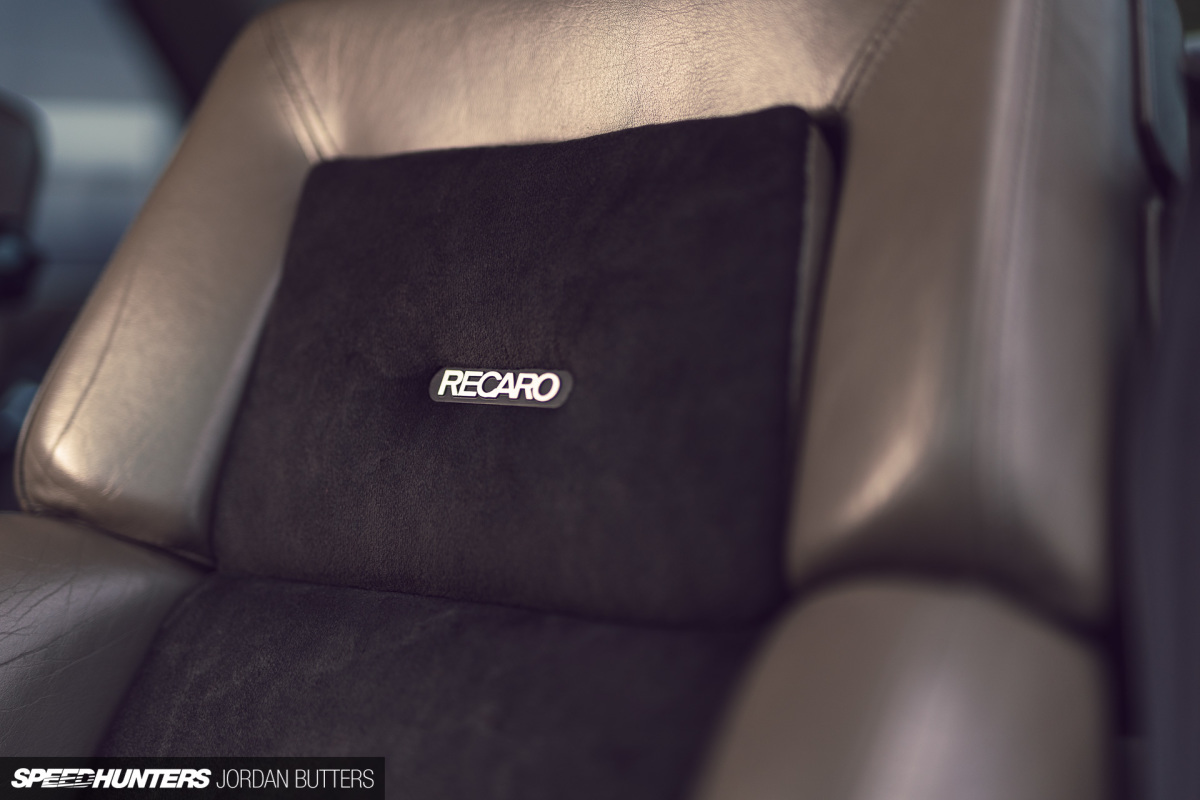
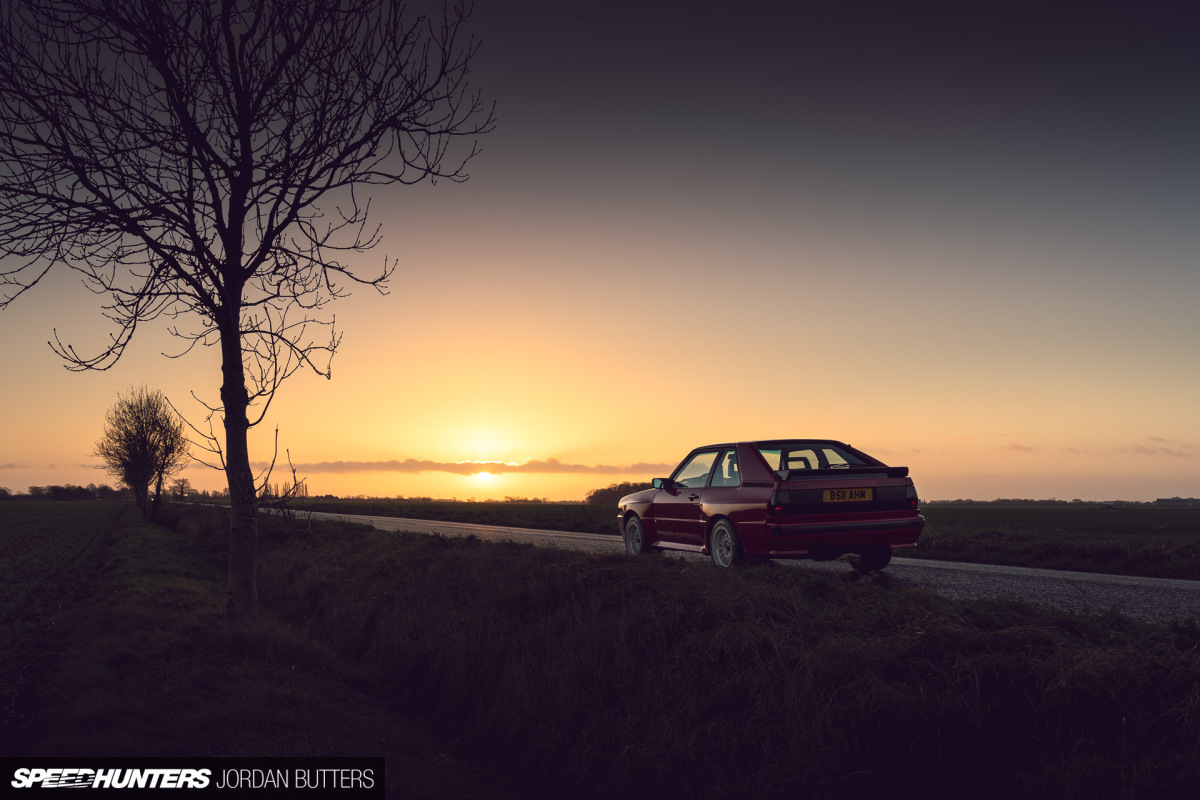
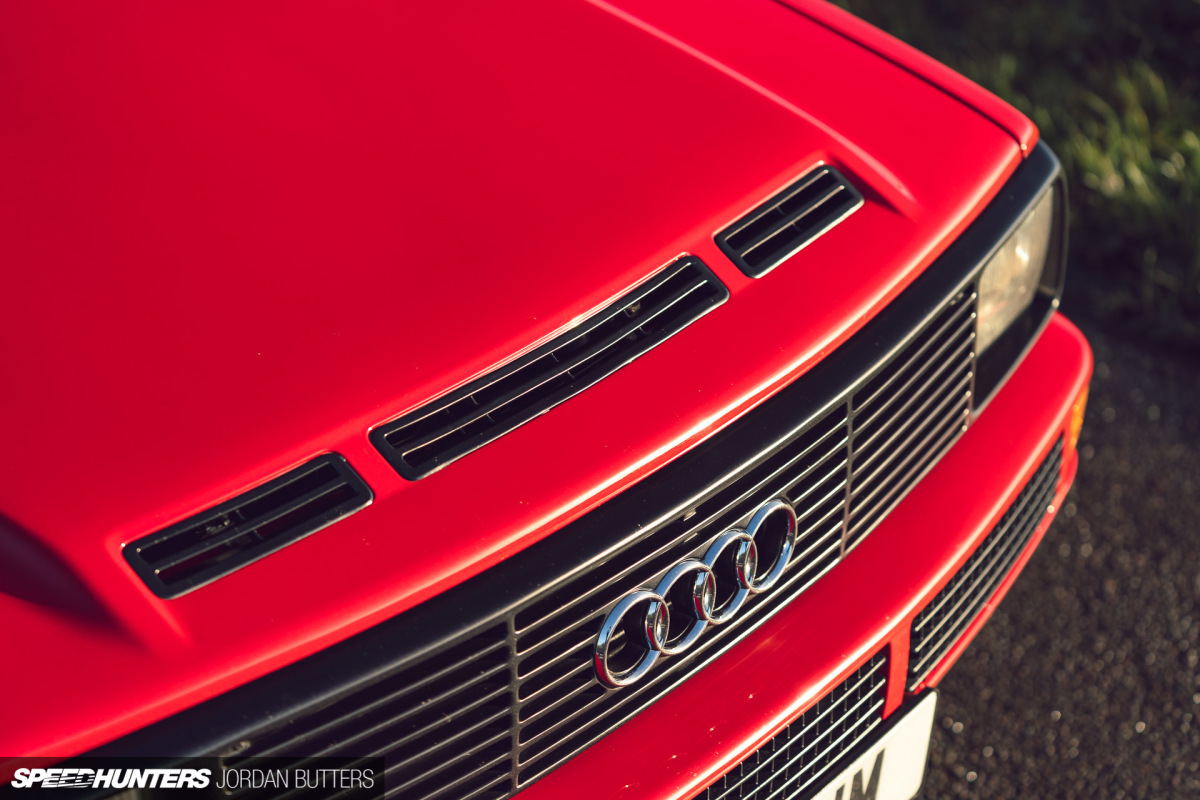





awesome photography your work seems different
"Quattro" is four in Italian without adding any t
Walter Treser is the correct name, not Tresser
Also, there was no B6 RS4.
I was in college when the car made its world rally debut and boy I would much rather have this than any Italian (yes Ferrari. Maserati, Lamborghini) given its wolf in sheep cloth appearance and overall performance. Yes Tom Selleck drove the 308 GTBi but this car would annihilate exotic Italians at that time. A true masterpiece from Audi. 2 decades later despite engineering progression, Volvo's B5254T3 engine with bigger displacement (2521 cc versus Audi's 2144 cc) still could not match it in specific power.
Great article, as we always expect from speedhunters and never get disappointed. I just wanted to point out a little mistake: “quattro” is indeed the italian for “four”, without any “t” added to it as it really is spelled like that.
we can compare Audi Quattro with Lancia Delta. Ferraris are in different league. they are unaffordable, unreliable, but yet desirable and fast enough.
off-roading with a Ferrari (308! F40!!!) is silly idea! and honestly it's a bit of a show-off. (in negative way). it's just my opinion. maybe I'm wrong, maybe not!
The Quattro is one fine example of Form follows Function, e.g to win races
Great article, and incredible photography. The audi rally cars of yesteryears were the inspiration for me to take the plunge and buy a 2018 RS3. Great piece by Clarkson of their competition with lancia online.
None of those bulky, heavy and pretty crude 4-wheel drive systems that had a heavy transfer case had any center differential. Drive was fixed at 50/50 F/R by design. The transfer case is essentially in place of the center diff. Imagine a Land Rover from the time, and almost all 4 wheel drive pickups then and still currently. If it's for off road use primarily, it will not have a center diff. A center diff that is lockable (like a transfer case) and can be a normal open or biased differential is a much newer development used in the truck and AWD/4WD SUV market.
What about the Jeep Quadra-Trac systems from the early 70s? The first ones used on the Borg transfer cases allowed for both Open and Locked 4Hi ranges. I believe they started using those systems in FSJs and later on the CJ7s for a while.
Yes but that's an exception, not the rule. No 4WD truck or hard core off roader, other than Jeep, had that capability at that time. For them a transfer case was the only game in town. Jeep sought to civilize some Cherokee and CJ7's (when they had an automatic transmission) with some everyday driving focus in addition to off road capability.
I hate to be that guy but I'm 100% certain that there's no B6 RS4. The first one (turbo-charged V6) was the B5, the second (atmo V8) was the B7.
The meaning or translation of Audi is: "to listen".
It's quattro, not Quattro. Audi never used a capital Q, ever.
Designed & assembled by quattro GmbH, now known as Audi Sport.
Audi for life!
This article desperately needs photos of quattro spitting out fire from its exhaust.
This is the quattro impression when I was a teenager then.
The Quattro was what made the rally car we know of today many people don't know what the Quattro was but it introduced AWD to not only WRC but also to the production car
When it comes to cars like the WRX or Evo, AWD is just is very good whether it's punching it in the corner on the backroads or driving in the dirt it's just a really good platform for all round cars and in some ways better than FWD and RWD cars
I really love how motorsports lead to innovation
One person that you shouldn't forget when talking about Audi quattro is Hannu Mikkola. Maybe the greatest and most versatile rally driver of all time and also a trained automotive engineer. He joined Audi at the top of his career and continued to race Ford and Mercedes while developing the quattro. Went on to win WRC-title with Audi at a ripe age of 41 in 1983. When he joined Audi no one believed in the project. Audi tried to hire Röhrl to accompany Mikkola for 1981 season but in Mikkola's words he didn't dare, so they hired Michelle Mouton instead.
Thanks for the great article. I love cars as much as the next guy. Somehow, I enjoy more reading articles of less famous cars, than the "usual suspects" or iconic cars mentioned. Maybe my mind is beginning to numb after seeing too many iconic cars in the webpages these days......Www.worksnew.com